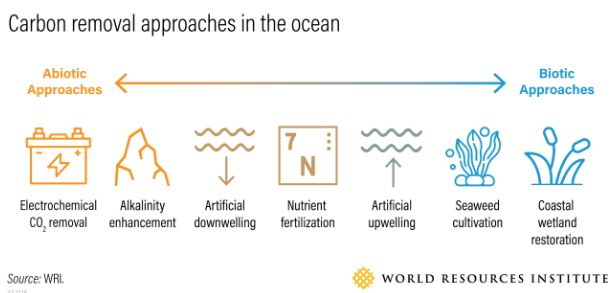A new study throws light on the limitations of the current approaches of removing carbon dioxide from the ocean.
In total, the ocean holds around 42 times more carbon than the atmosphere.

|
Abiotic Approaches in Marine CO2 Removal |
|
|
Biotic Approaches in Marine CO2 Removal |
|
References
A tribute was recently paid to revolutionary tribal leader Birsa Munda on his 124th death anniversary.
|
The Ulgulan Movement or The Great Tumult |
|
Sardari Ladai (1858-90)
References
The Kenyan government has launched a campaign against Indian House Crows, aiming to eliminate one million of them by the end of 2024.
The house crow, also known by various names such as the Indian crow, grey-necked crow, Ceylon crow and Colombo crow originated from India and other parts of Asia but has since spread to many parts of the world, aided by shipping activities.
Reference
Down to Earth| Impacts of Indian House crows in Kenya
Recently, the ITLOS issued an advisory opinion on international climate change litigation requested by the COSIS.
International Tribunal for the Law of the Sea (ITLOS) is an independent judicial body established by the 1982 United Nations Convention on the Law of the Sea (UNCLOS).
References
Researchers are studying multi-drug resistant pathogens on the International Space Station (ISS), which could have key applications for astronaut's health as well on Earth.
Reference